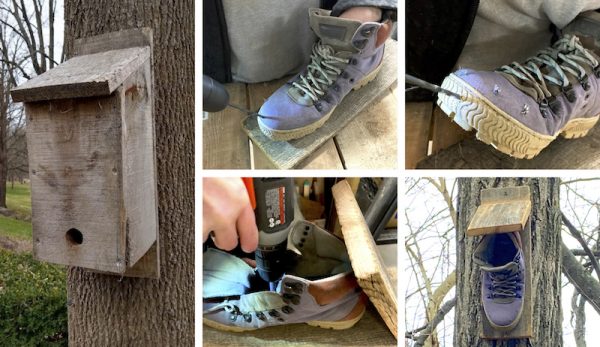
By now, plenty of gardeners have hung up their shovels and hoes for the season—only to replace these with bird feeders and bag after bag of birdseed. But feeding birds isn’t necessarily the most helpful action we can take to help get them through the winter.
“The feeders are a wonderful thing for people, but they’re not that significant for most birds,” says Roger F. Pasquier, author of Birds in Winter: Surviving The Most Challenging Season. An expert on the behavior and ecology of birds in winter, Pasquier is also an associate at the Department of Ornithology at the American Museum of Natural History in New York.
“Shelter is the scarcer resource,” Pasquier adds. “It is in these altered landscapes like suburbia and farm areas where [birds] have far fewer nest sites available. Creating more nest sites is really the most useful thing you can do for bird populations.”
Cold Winter Nights
Live trees with large cavities as well as snags allowed to remain standing can shield many birds simultaneously. For instance, Pasquier says, “There are places in the West where the pygmy nuthatch is found to roost with as many as 72 in a single hole in a tree.”
For their part, artificial nest boxes provide dry, secure spots to raise nestlings through spring and summer. These same boxes can offer certain birds much-needed protection in winter.
“The birds that, in winter, roost in man-made boxes are all species that in natural situations seek out holes in trees,” Pasquier notes. “Some birds that can fit into boxes intended for the nesting of a different species may use these, especially if the original occupants are not present…. Birds like Eastern bluebirds that often migrate some distance from their breeding range are on the lookout for suitable roost sites—natural or artificial—during autumn and winter.”
Read more: You can attract specific bird types with customized suet cakes. Here’s how.
Try a Roost Box
Relatively new compared to the myriad nest boxes available, roost boxes are designed specifically for groups of birds to use during winter. Unlike traditional nest boxes, the entrance hole for winter roosting boxes is located at the bottom of the front panel, rather than the top.
(Because heat rises, positioning the entry hole in this way is thought to help the boxes’ occupants to conserve heat.)
Roost boxes also typically include a series of staggered perches inside, to accommodate several small birds at once. And, while they do afford drainage, they offer much less ventilation.
Ideally, you should face roost and nest boxes south. If mounted on a post, include a squirrel guard or baffle to discourage predation.
Give ‘Em the Boot
Of course, cavities for winter roosting or raising young during other times of the year need not be fancy. Got an old pair of boots that are beyond repair? Even these can serve as bird sheltering spots.
As you might expect, larger sizes work best. But if area birds have few cavities from which to choose, most any size will do.
To create a durable shelter that you can periodically remove and clean out, you’ll want to mount the boot (toe-down) to a small board and then screw the board as high as you can onto a tree, post, barn or other structure. For extra shelter from the elements, you can also affix a small roof piece to the top of the mounting board so that it overhangs the mouth of the boot.
To start, drill a few drainage holes into the toe of the shoe. Next, pull back the boot’s tongue, peek underneath the insole, and remove any metal plates or hardware that may have been built into the shoe.
Then, drill a couple of pilot holes from inside the shoe, which pass through the sole and into the mounting board. Screw the shoe onto the board and attach the optional roof piece now.
(Finally, to make installing the cavity shelter easier, drill pilot holes through the mounting board and get the mounting screws started before climbing that ladder!)
Read more: Think ahead to next season with this handbuilt bluebird nest box!
Spring Cleaning
Bird mortality during winter roosting is, unfortunately, common.
“No matter what kind of box you have or what natural sites there are, there are always likely to be some [dead] birds at the bottom, if many birds are using these,” Pasquier explains.
The birds at the bottom—possibly weak from winter starvation—are “least able to push their way [up] to get enough air,” he continues. So, come spring, always check roost and nest boxes for these unlucky specimens and remove them accordingly.




